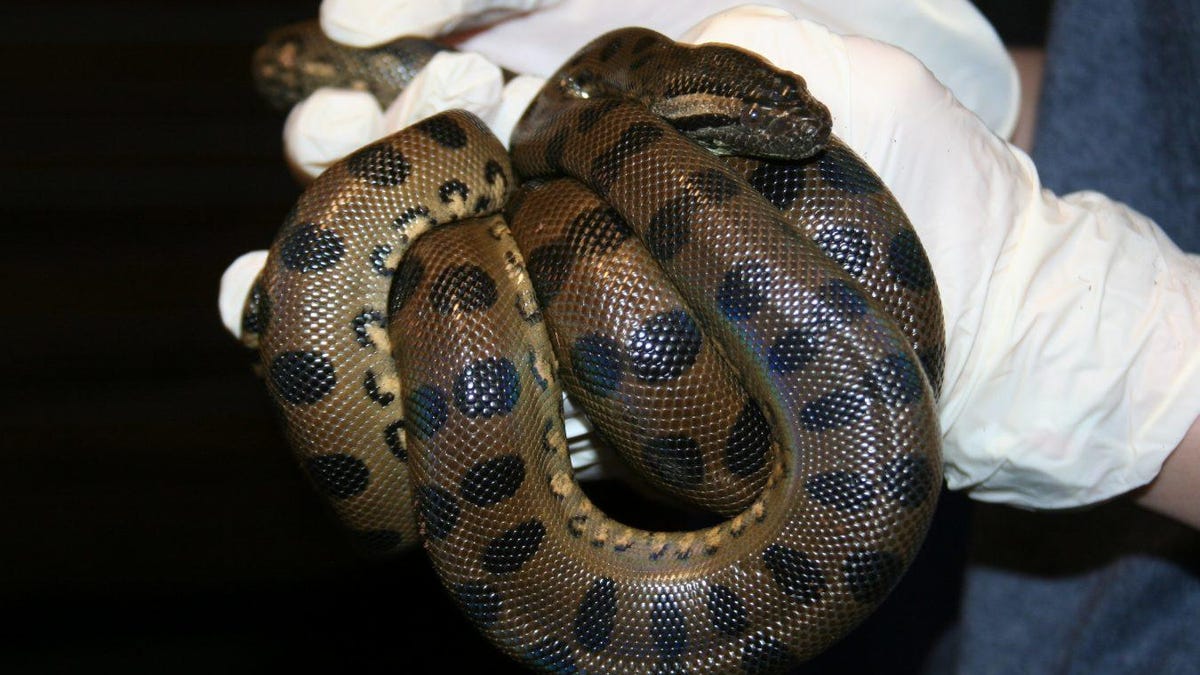No dudes needed: Baby anaconda snakes born in all-female exhibit
The New England Aquarium welcomes two slithering danger noodles thanks to the rare phenomenon of parthenogenesis.

Two baby anacondas arrived in an unexpected fashion at the New England Aquarium.
Life finds a way. Anna, a 10-foot-long adult green anaconda in residence at Boston's New England Aquarium delivered some babies this past winter. That wouldn't be remarkable, except all the other snakes in the aquarium's Amazon exhibit are also female.
The aquarium staff re-checked the snakes' genders and scrutinized Anna's life history to confirm she hadn't been exposed to any adult males. Everything checked out, but they also sent off tissue samples for DNA analysis to confirm what they suspected: parthenogenesis.
The two babies relax behind the scenes.
Parthenogenesis is a type of asexual reproduction without fertilization. The term comes from the Greek for "virgin creation."
"These two young appear to be genetic copies or clones of the mother," the aquarium said in a blog post Thursday.
The phenomenon is rare in reptiles, but not unheard of. In 2014, three baby green anacondas were born by parthenogenesis at a zoo in the UK. That makes the New England Aquarium home to the second confirmed case for these snakes.
Most of Anna's babies were stillborn. Of the three born alive, two survived. The aquarium staff has noticed two very different personalities in the snakes. The thinner is pretty chill, while the heavier one enjoys exploring its environment.
The bambinos are being kept behind the scenes for now. Green anacondas, which can weigh up to 550 pounds (250 kilograms), are the world's largest snake species, so these rare kiddos won't stay dainty for long.

